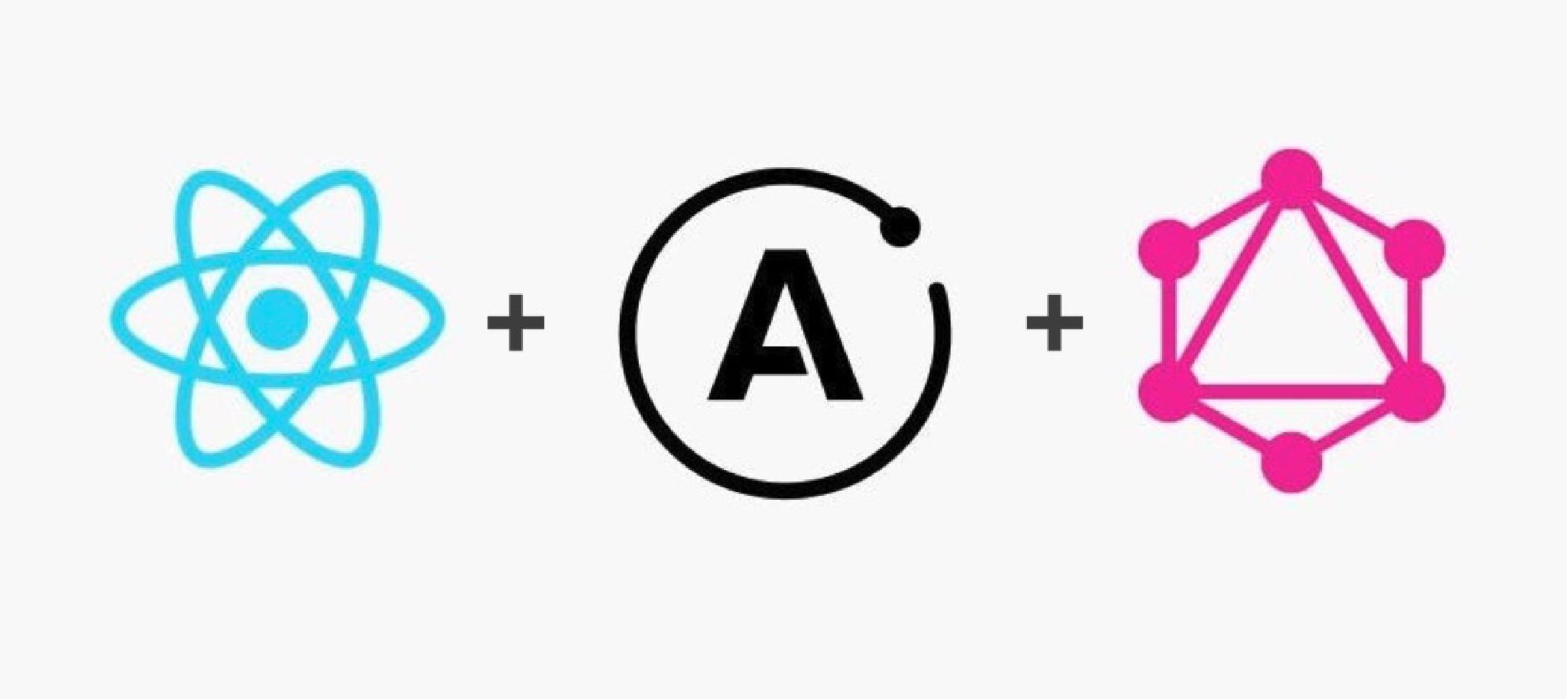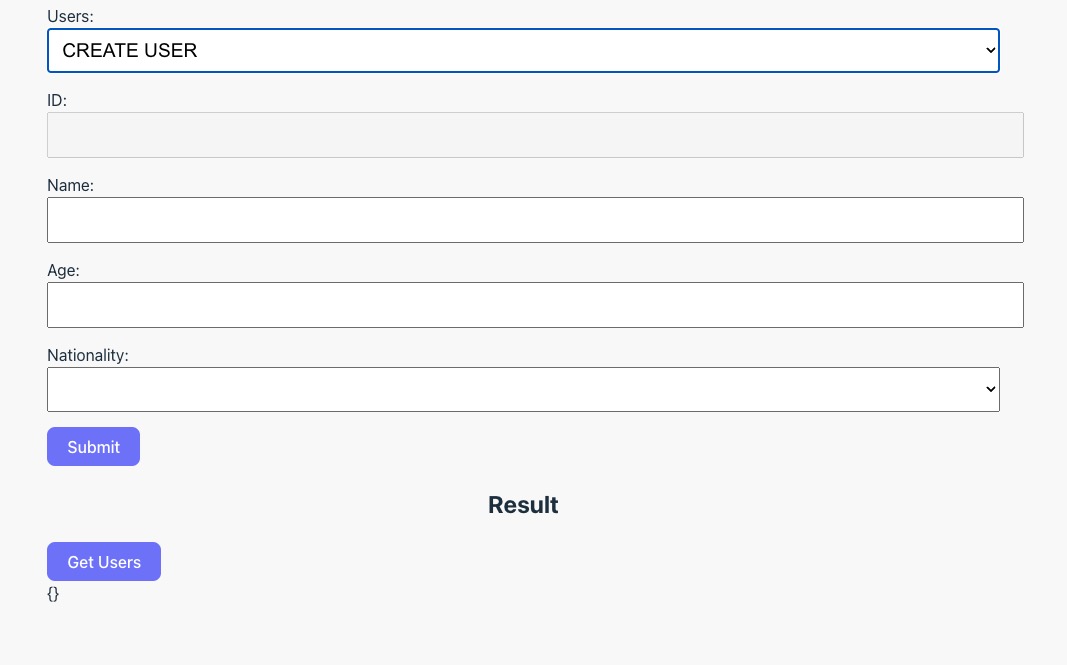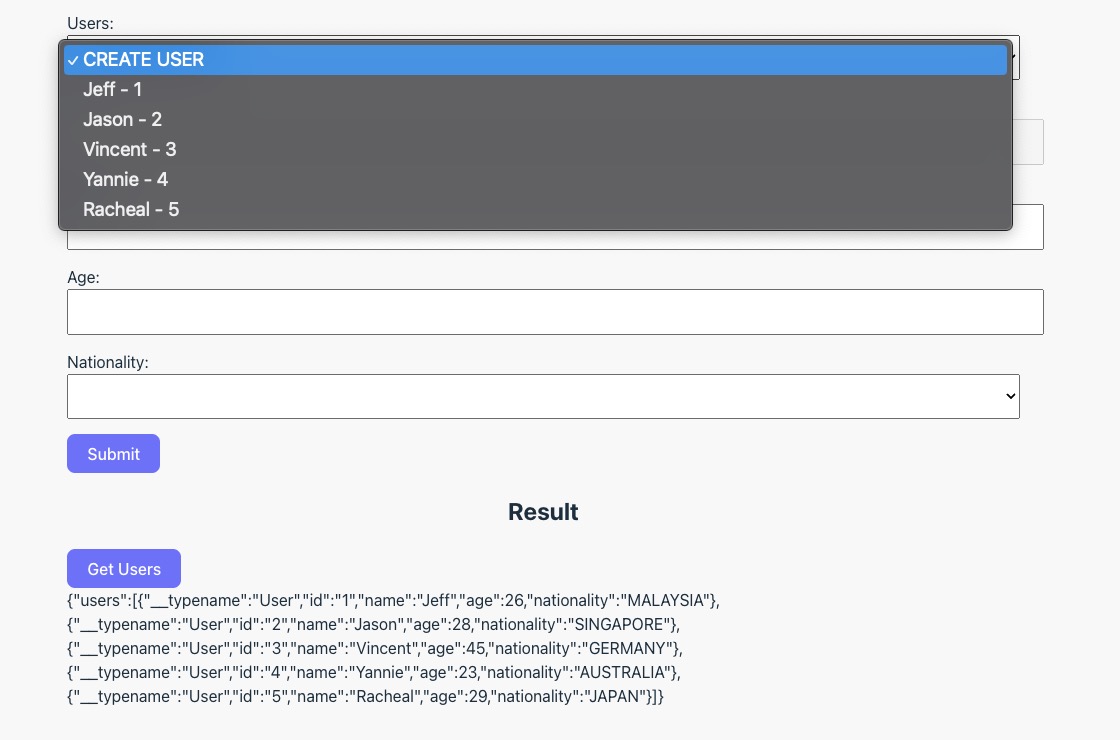Table of contents
Introduction
Before we get started, it’s high recommend to clone the Github repo so that we could follow along this tutorial and fill in the necessary code of the starter pack
What do we need?
Prerequisite
- Open the final pack of 01-apollo-graphql-server directory:
- Install the necessary packages by running
npm installcommand. - Start the GraphQL server locally by running
npm run startcommand and the server should start port4000
- Install the necessary packages by running
- Open the starter pack of 02-react-graphql directory:
- Install the necessary packages by running
npm installcommand. - Start the React server locally by running
npm run devcommand and the server should start at port5173
- Install the necessary packages by running
We can now navigate to http://localhost:5137/ and here is how the React application should look like
Objective
As you can see from the image above, we have multiple inputs available in the UI which is representing each attribute of our USER type defined in last tutorial except the friends field.
The objective of this tutorial is to connect the following GraphQL query and mutation from this React application into your GraphQL local server.
- CREATE USER
- UPDATE USER
- GET USERS
Initial configurations
Before we get started, it’s important that we have all the necessary packages ready. Kindly install the following NPM packages:
Once these packages are ready, we could now initialize our Apollo Client and wrap it as a React context provider under the main.jsx file.
...
import { ApolloClient, InMemoryCache, ApolloProvider } from "@apollo/client";
const client = new ApolloClient({
uri: "http://localhost:4000/",
cache: new InMemoryCache(),
});
ReactDOM.createRoot(document.getElementById("root")).render(
<React.StrictMode>
<ApolloProvider client={client}>
<App />
</ApolloProvider>
</React.StrictMode>
);
Explainations
- We first import the necessary class and context provider from
@apollo/clientpackage. - We then instantiate and initialise our Apollo Client with the right parameters such as:
uriwill be connecting to our GraphQL server.cachewill be the instance of InMemoryCache, which Apollo Client uses to cache query results after fetching them.
- Then we wrap our React application under the Apollo Context provider to ensure it could access in everywhere of our application.
useQuery
Before we start connecting the users query from the React App, it’s important that we have define our query which is the similar syntax and command we used under the GraphQL editor in <YOUR_GRAPHQL_SERVER_URL>/graphql
We could write our GraphQL query command under the operations/user.js directory with the aid of imported gql function from @apollo/client package.
import { gql } from "@apollo/client";
export const GET_USERS = gql`
query GetUsers {
users {
id
name
age
nationality
}
}
`;
Explaination
We utilized the gql function to wrap our GraphQL query command which first required us to defined the query name [GetUsers] as well as the targetted resolver [users] to be called from the server. Then we could assign this command into a variable and export it.
Execute GraphQL query with useQuery function
Let’s navigate to the App.jsx file and work with the useQuery function.
There is nothing you would need to deal with the
react-hook-formpackage.
...
import { useQuery } from "@apollo/client";
import { GET_USERS } from "./operations/user";
function App() {
...
const [responseData, setResponseData] = useState({});
const [users, setUsers] = useState([]);
const { data } = useQuery(GET_USERS);
...
const selectUser = (user) => {
const userId = user.target.value;
// If it's a create user process
if (userId == -1) {
reset();
return;
}
// Uncomment below code once we implemented GET_USER GraphQL query
// const selectedUser = data.users.find((user) => user.id === userId);
// setValue("id", selectedUser.id);
// setValue("name", selectedUser.name);
// setValue("age", selectedUser.age);
// setValue("nationality", selectedUser.nationality);
};
// Uncomment below code once we implemented GET_USER GraphQL query
// useEffect(() => {
// if (data && data.users) {
// setUsers(data.users);
// setResponseData(data);
// }
// }, [data]);
return (
<>
<form onSubmit={handleSubmit(onSubmit)}>
...
</form>
</>
);
}
export default App;IMPORTANT: Please uncomment the highlighted code above from your end.
Explaination
- We first imported the
useQueryhook from@apollo/clientpackage and the GraphQL command variable calledGET_USERSthat we have defined earler. - We can then call provide our
GET_USERSGraphQL commands into theuseQueryhook and it will actually make the request immediately once this component got loaded and the response data will be stored under a attribute calleddatafrom the hook. - Once we uncomment the highlighted code above, we can actually see the response data in the UI Result section as well as the
Usersdropdown input is now contain the list of users that we have defined in our server.
useMutation
Since we are now able to retrieve the list of users from our GraphQL server. Let’s connect the other resolvers such as Create User and Update User with the useMutation hook.
We could write our GraphQL query command under the operations/user.js directory with the aid of imported gql function from @apollo/client package.
import { gql } from "@apollo/client";
...
export const CREATE_USER = gql`
mutation CreateUser($input: CreateUserInput!) {
createUser(input: $input) {
id
name
age
nationality
}
}
`;
export const UPDATE_USER = gql`
mutation UpdateUser($input: UpdateUserInput!) {
updateUser(input: $input) {
id
name
age
nationality
}
}
`;
Explaination
We utilized the gql function to wrap our createUser and updateUser resolvers into it’s respective mutation and assigned into a variable.
Take note that these mutations are required us to pass in the payload. We can refer back to the defined schema type of our input from GraphQL backend as following:
type Mutation {
createUser(input: CreateUserInput!): User
updateUser(input: UpdateUserInput!): [User!]
}
Execute GraphQL mutations with useMutation function
Let’s navigate to the App.jsx file and work with the useMutation function.
Data access to each inputs have been completed. We can access each of the input’s value under
dataargument fromonSubmitfunction .
|
|
Explaination
- We first initialize the
useMutationhooks by passing in the GraphQL command variable calledCREATE_USERandUPDATE_USERthat we have defined earler. It will then return a list of result back in an Array form but in this tutorial, we only care about the first element which is the function that will execute the GraphQL mutation. - From code line 21 to 26 is the place where we verify if the any user has been selected from the User dropdown input where the given payload will be come along with their unique id. Then we will perform an update user action.
- Otherwise, we will perform a create user action if the user id is not specified.
- Note: Please ensure to pass in the correct payload otherwise, we will be getting a GraphQL error.
- We would need to pass in our payload into the specified mutation variable and wrap under the
variablesobject. In this example, we have defined our Mutation input as$input, so the format will be({variables: {input: <PAYLOAD_OBJECT>}})


